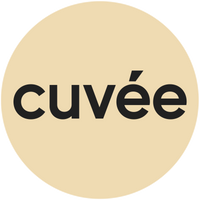Champagne Paul Bara
The Bara property was built in 1860. In the beginning, it was a farm with stables, a cow shed, a sheep pen and a cellar; however, in 1965, the barn was transformed into a press room and a winery.
Paul Bara, the father of today's owner Chantale, was the first of the dynasty to sell champagne under the brand of the same name in the 1950s. Chantale recalls how this man of character and conviction would often say: ‘We must keep hold of the fields to feed us’.
He also wrote a very interesting book retracing the story of his 'beloved' village of Bouzy, its people and their wines and culture.
In 1975, the Bara champagne house innovatively became one of the first to export its champagnes to the United States. Today, the brand has a long-standing tradition of transatlantic sales and continues to work with the same US importer as back in the day. Nowadays Paul Bara champagnes are sold on all continents of the world. In 1980, Chantale began assisting her father and soon after, in 1986, began co-running the business. The 6th generation, she gets on with excellency by being a partner and also President during 4 years of the Club Trésors de Champagne and by intiating in 2013 a major programme of renovation of the winery to enhance its winemaking capacity and precision.
Specialist of the Pinot noir, Christian Forget strives to preserve the signature of the House by producing well-structured and elegant wines, fully expressing the Terroir of Bouzy.
Succeeding Chantale Bara, her sister Evelyne Dauvergne has been taking over the management of the House in 2018. Very proud to be able to apply the traditional and family values passed down by her father, Evelyne really aims to develop the company meeting the requirements of our century and of course to pursue this beautiful family story with a mix of wisdom and sweet madness.
Winemaking
Every step of the winemaking process is performed with absolute rigour, and every effort is made to allow the wines to reveal the best of themselves. During harvest, the grapes are picked by hand with the utmost care. They are then pressed using two 4,000 kg presses; one is a traditional wooden one with a horizontal plate, where the edges of the 'press cake' must be brought back to the centre of the press manually using a fork, and, the other, a modern automatic titled plate press. These 'small' volume presses mean that the various varieties and production from different plots can be processed separately up to blending. The end-of-press juices (known in French as 'jus de taille') are never used in Bara champagnes, which is one of the specificities of the house. Alcoholic fermentation takes place in stainless steel vats at controlled temperatures and the malolactic fermentation is prevented to preserve the freshness and all of the aromas of the wine.





